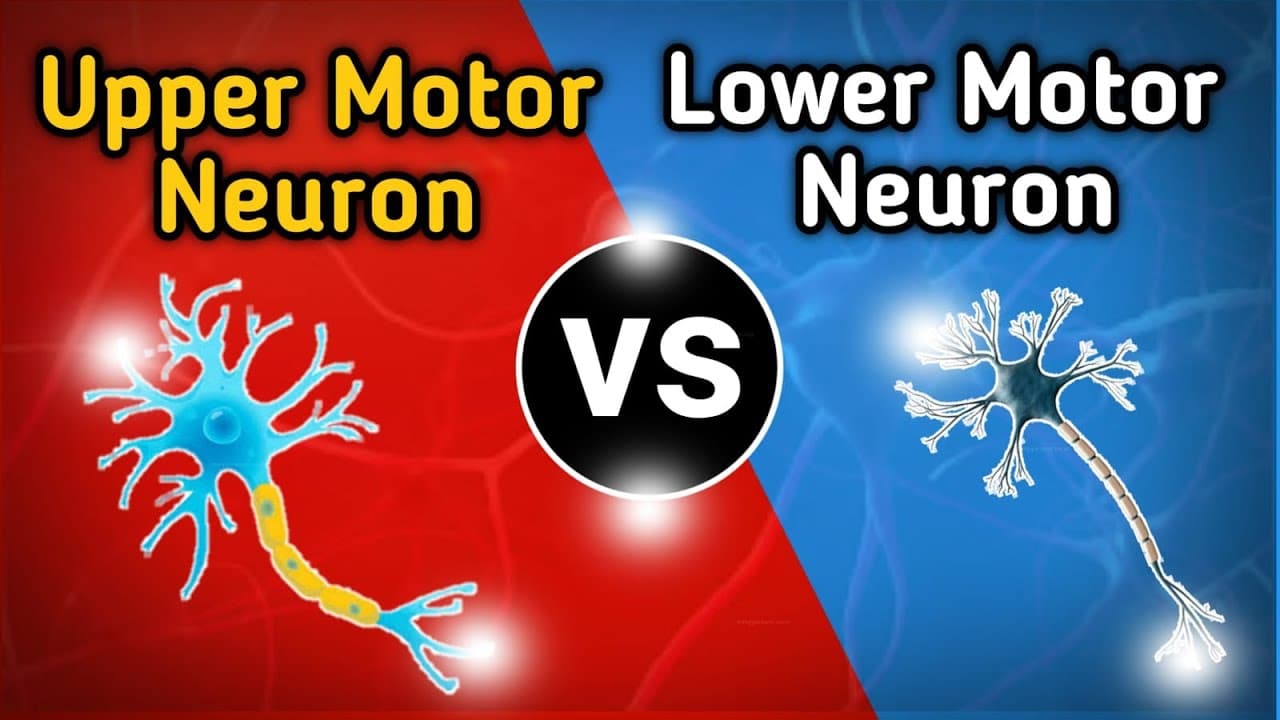UMN vs LMN – Upper motor neuron (UMN ) vs Lower motor neuron ( LMN ) – are two types of neurons that play critical roles in the functioning of the nervous system, particularly in motor control and movement.
They are part of the two-neuron chain responsible for transmitting motor signals from the brain to the muscles and are involved in different stages of the motor pathway.
Upper motor neuron (UMN) vs Lower motor neuron (LMN)
Upper Motor Neurons( UMN ) :
umn vs lmn location – UMNs are located in the cerebral cortex of the brain and brainstem.
They are responsible for carrying motor signals from the brain down to the lower motor neurons in the spinal cord or brainstem.
These signals travel through the descending motor pathways.
The primary function of UMNs is to initiate and modulate voluntary motor movements.
They are also involved in coordinating complex movements, maintaining muscle tone, and executing skilled motor tasks.
Lesions or damage to upper motor neurons
Lesions or damage to upper motor neurons can result in conditions like:
- Spasticity: Increased muscle tone and stiffness due to increased reflex activity.
- Hyperreflexia: Exaggerated reflex responses.
- Babinski sign: Abnormal reflex in which the big toe extends upward when the sole of the foot is stimulated.
Lower Motor Neurons (LMN ):
LMNs, also known as anterior horn cells or motor neurons, are located in the ventral horn of the spinal cord and certain brainstem nuclei (cranial nerve motor nuclei).
They receive motor signals from the upper motor neurons and they are responsible for transmitting these signals to the skeletal muscles.
The axons of LMNs exit from the spinal cord through the ventral roots and form the peripheral nerves that directly innervate the muscles.
Lesions or damage to lower motor neurons
Lesions or damage to lower motor neurons can result in conditions like:
- Muscle weakness: Due to the loss of motor signals reaching the muscles.
- Hypotonia: Reduced muscle tone.
- Hyporeflexia or areflexia: Reduced or absent reflex responses.
- Muscle atrophy: Shrinking or wasting of muscles due to lack of nerve stimulation.
In summary, upper motor neurons initiate and modulate motor signals from the brain.
while lower motor neurons transmit these signals from the spinal cord or brainstem to the muscles, ultimately leading to muscle contraction and voluntary movements.
Damage to either of these neuron types can lead to distinct motor deficits and neurological conditions.
dysfunction in Upper Motor Neurons (UMNs):
When there is damage or dysfunction in the upper motor neurons.
it can lead to various neurological conditions known as upper motor neuron syndromes.
Some common examples include:
Stroke:
Strokes, also known as cerebrovascular accidents, can cause damage to the blood vessels supplying the brain, leading to the loss of blood flow and oxygen to certain areas of the brain.
This can result in the impairment of upper motor neurons and subsequent motor deficits.
Multiple Sclerosis (MS):
MS is an autoimmune disease where the body’s immune system attacks the protective covering of nerve fibers in the central nervous system, including the upper motor neurons.
This demyelination disrupts the transmission of motor signals, causing a range of motor symptoms.
Amyotrophic Lateral Sclerosis (ALS):
ALS is the progressive neurodegenerative disease which affects the both upper and lower motor neurons.
As the disease progresses, motor neurons degenerate, leading to muscle weakness, muscle wasting, and eventually paralysis.
dysfunction in Lower Motor Neurons (LMNs):
When there is damage or dysfunction in the lower motor neurons.
it can result in various conditions collectively known as lower motor neuron syndromes. Some common examples include:
Spinal Cord Injury:
Traumatic injuries to the spinal cord can damage lower motor neurons and interrupt the communication between the brain and the muscles.
The extent of motor deficits depends on the level and severity of the spinal cord injury.
Motor Neuron Diseases:
Besides ALS, other motor neuron diseases can specifically target the lower motor neurons.
For example, Spinal Muscular Atrophy (SMA) is a genetic disorder that primarily affects lower motor neurons, causing muscle weakness and atrophy.
Peripheral Nerve Disorders:
Conditions like peripheral neuropathy or peripheral nerve injuries can result in damage to the peripheral nerves that carry motor signals from the lower motor neurons to the muscles.
This leads to muscle weakness and loss of reflexes.
Diagnosis and treatment of upper and lower motor neuron conditions depend on the specific underlying cause and the extent of neurological impairment.
Neurologists and other healthcare professionals use clinical assessments, imaging techniques, and electrophysiological tests to diagnose and manage these conditions.
Management may involve physical therapy, occupational therapy, medications and, in some cases, surgical interventions to address the underlying cause or to alleviate symptoms.
Research in the field of neurology continues to advance, aiming to better understand these conditions
And develop effective treatments to improve the quality of life for those affected by upper and lower motor neuron disorders.
Read medical related articles at physio talk official website
